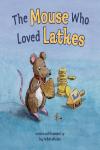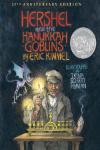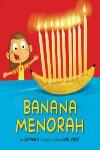The Creation of Jewish Identity: From the Biblical Era to the Second Temple Period by Juan Marcos Bejarano Gutierrez

The book on Kindle
A great many Jewish holidays and practices, in their earliest understanding, reflect the great innovation of Biblical religion. The Bible emphasized historical events in contrast to nature. Other ancient Near Eastern religions stressed the latter. As Rabbi Abraham Joshua Heschel noted, in the Jewish tradition, faith is memory. The observances of Jewish holidays and various Jewish practices articulate theological ideas reflective of collective Jewish memory.
For example, Jews celebrate Passover because they remember that God brought them out of Egypt. Jews observe the commandment of circumcision because they recall that their forefather Abraham was commanded to do so. They commemorate the holiday of Sukkot because they evoke the journey of their ancestors in the wilderness. These are just a few examples.
One might assume that Jews and Judaism naturally emphasize the history of the Jewish people. Until the modern era, this was surprisingly not the case. In his work Zakhor: Jewish History and Jewish Memory, the historian Yosef Hayim Yerushalmi argues that what has been understood as history in Jewish circles from the Biblical era until reasonably recent times is considerably different than what the modern reader might expect in light of Jewish emphasis placed on memory.
Until the modern era, a general lack of interest in historical events detached from the Jewish community’s theological concerns was typical. As the medieval Jewish historian Solomon Ibn Verga noted, an interest in history was seen as a Christian custom. Verga was the author of Shevet Yehuda, the first prominent Jewish historiography work in the modern period.
According to Yerushalmi, the seeming disconnect between memory, history, and historiography, i.e., the writing of history, is astonishing. Surprisingly, beginning with the Hebrew Bible, an emphasis, or better said, a command to remember is given. But what Jews remembered or chose to remember is critical. The actual recording of historical events was anything but the primary vehicle through which the Jewish people preserved their collective memory and identity. Yerushalmi highlights the distinction between Jewish memory and Jewish historiography.
He points to various Biblical texts, e.g., Deuteronomy 25:5-9; Deuteronomy 6:10-12; Joshua 4:6-7, etc., to note that while the Bible is focused on remembering the historical acts of God’s providence on behalf of Israel, they are nevertheless often connected to the lives of specific individuals in all of their detail.
Yerushalmi asserts that Jewish memory is selective. Some kings and significant events do not necessarily merit attention, while others do. This stands in contrast with so much of the Biblical text that focuses on none other than major incidents and great individuals presented in historical narratives.
To understand the reason for the disconnect between history and memory, Yerushalmi contends that part of this may lie in our understanding of history as drawn from the Greeks. The Greeks themselves appear to have failed to achieve a sense of the meaning of history as a whole. Herein lays the significant contribution of Jews to historiography.
All this was stated simply to highlight one important issue. Jewish identity is intrinsically based on the memory of events. However, the events’ historical nature as we think of them may or may not coincide in the modern era. Still, the memory of the past is intrinsic to what Jewishness is and how it is perceived. Therefore, Jews from Morocco can connect with Ethiopian Jews or with Russian Jews, etc. Because whatever ethnic, social, and even racial differences exist, there is a shared memory of the past. Those who join the Jewish people as converts adopt the memory of the family they have joined. This book investigates Jewish identity from the Biblical era to the Second Temple Period.
Year first published: 2020















